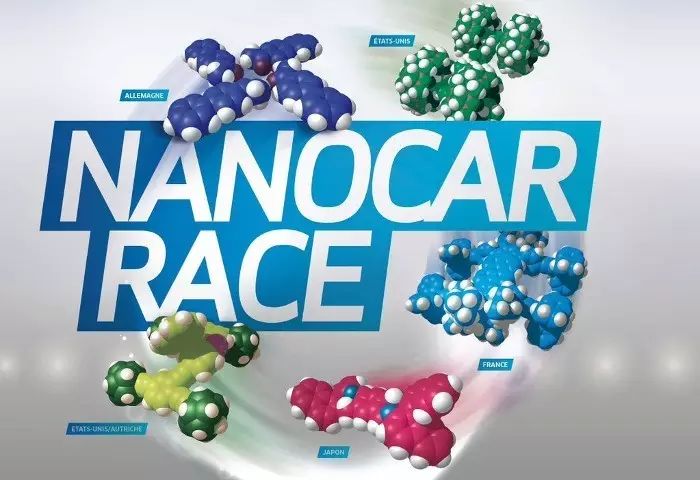
Nanorace: scientists are going to drive fast, too.
Drive a molecular car!
there is a kind of racing car in which the race lasts for 38 hours in a vacuum of only about 5k (- 268 °C), but the participating vehicles can only walk out of about 3 nanometers at each step. it takes us several minutes to get an image of them, not only because we can't see them with the naked eye. But scientists are still excited about it.
this is Nanocar Race, or we can call it Nanorace for short. This is an unprecedented magical race, not by racing drivers, but by scientists who study nanomaterials. The venue is not an ordinary track, but a gold plane under a scanning tunneling microscope. The vehicles participating in the competition are all "molecular machines" synthesized by scientists.
previously, the competition was originally scheduled for October this year, but in order to make better preparations, the official competition has been postponed and is expected to be held in Toulouse, France in the spring of 2017.
it is estimated that many people feel that scientists are bored to this extent when they see this thing. It must be pointed out that this competition is not just for fun. In addition to testing current technology in the field of molecular machines, the car racing is also of great significance-testing a new scanning tunneling microscope from the French National Centre for Scientific Research.
STM is an experimental device that can help people "see" and manipulate molecular and atomic scales. The key lies in a very thin, charged probe. The tip of the needle is not in direct contact with the surface of the material, but is suspended for a short distance, and when a voltage is applied between the material and the tip, a weak current flows (called tunneling current in quantum mechanics). And the strength of this current is very sensitive to the distance between the tip and the surface of the material. By using the tunneling current, the probe can get the "height map" of the material surface while groping on the sample surface. At the same time, the probe can also control the atoms on the surface, and the molecular car is also powered by the probe.
the great thing about this scanning tunneling microscope is that it has four probes that can be operated separately. This not only improves the operational efficiency of the usual research, but also makes it possible for nano-cars to compete in the same field.
through scanning tunneling microscope, researchers see and control their "cars":
in this competition, a total of six teams plan to participate, and they will select four after the primary. Participate in the final 38-hour uninterrupted molecular racing race. Of course, it is completely permissible to change people halfway.
teams are now ready for their own "racing cars", and these cars are also of different styles. For example, the molecular car of the University of Ohio in the United States has four regular wheels:
, while the car sent by the National Materials Research Center of Japan has no wheels and axles at all, it is more like wriggling forward.
of course, it doesn't matter whether it has wheels or not, as long as it can move, there will be no problem. After all, the nano-world does not need to obey the rules of daily traffic.
now, molecular racing cars and the "track" are still conducting various tests, and it is not clear who will win the championship in the end. However, for this competition, winning or losing is really not so important, and the improvement of scientific research and technology is everyone's ultimate goal.
With options of flowy wedding gowns for the reserved to options for the bold personality. Latest arrivals in the newest different trendy styles!